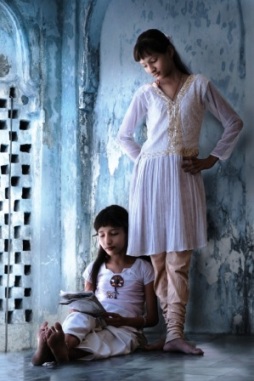Diamonds At Denim Prices
July 02, 12
The low end of the market isn’t simply about low-cost product and high volumes. There is a large and growing segment of young adults – ranging all the way from female college students to women under 30 – who are not inclined to pay high prices, but are nonetheless changing the way jewelry is viewed and bought in India.
These young women are experimenting with style and their own distinctive look. They are interested in jewelry with a high design quotient that will complement wardrobe choices and add the finishing touches to the personae they present to the world. They have redefined the low-end segment – demanding great design and good quality despite expecting to pay only modest prices.
Importantly, there are also young men in the same age bracket who think they understand these women and are willing to gift them jewelry they think will be valued for its design and look – along with the sentiment attached to the gifting. These young men are among the prime impellers of the gift buying that impels a great deal of the sales in this segment.
|
|
Given the impulsive nature of the gifting and the high degree of experimentation before a young women settles on a look that she thinks suits her and her persona, the jewelry in this segment has to be more than just affordable – it has to be low-priced enough to allow for several purchases, combinations and permutations over an extended period of time. In price terms, therefore, this jewelry has to be extremely low end.
Recognizing that this segment has a value far beyond the price points of the product sold – it is the arena that develops the higher-end jewelry consumers of tomorrow, who would also have firmed up product and brand choices – many major jewelry retailers are now actively targeting it with product and services.
The Gitanjali Group, which operates jewelry retail chain stores all over the country, and which offers a wide range of brands including Gili, Nakshatra, Asmi and D’Damas along with a number of Italian brands, is pursuing the low-end market aggressively.
Group chairman Mehul Choksi notes that even though the segment may be low end, the consumers patronizing it are from the top two socio-economic categories. The Gitanjali target age bracket for this segment ranges from 18 to 30.
Choksi makes the important point that this segment has made a conscious choice to move away from “junk” or fashion jewelry. "Teenagers and young adults are moving from costume and junk jewelry to light gold, silver and diamonds since it adds value to their lifestyle and fashion,” he observes. “So they aren’t just looking for budget product. Diamonds offer them that extra added value in the product – they’ll buy them set in silver to offset the extremely high prices of gold.”
Choksi observes, “Our low end diamond jewelry brands mainly target young adults and first-time buyers. With teenagers and young adults demonstrating a preference for light gold, silver and diamonds, this range satisfies their appetite for fashion and enhances their lifestyle.”
According to Choksi, one of the characteristics of this target group is their choice of trend-setting styles, at relatively low prices. “The hottest selling price points for this segment are around the Rs.2,500 level ($46.8),” he notes, adding, “and they seem to prefer earrings, rings and pendants of all the jewelry categories.
Tanishq, the jewelry retail chain from the giant Tata Group’s Titan division, has targeted the lowest end of this segment. Its FQ Teen Diamonds range has diamond charms and pendants that retail from a staggeringly low Rs.499 ($8.90) upward. FQ steps into the lives of teens with its website offering slogan contests and a fashion bulletin board for youngsters. "As India is a youth-dominated country, we felt it was important to invest in this segment," says Sandep Kulhalli, vice president, Retail & Marketing, at Tanishq.
But this segment defies straightforward price-point categorization. It is definitely not limited to the lowest of the low end. “The lowest price-points in my inventory don’t go below Rs.7,000 ($125) – and they usually hover around the Rs.10,000 ($178.60) mark,” says C. Vinod Hayagriv, chairman of Bangalore-based C. Krishiah Chetty & Sons, “but this youth category is an important one and we definitely cater to it. We have range of jewelry that is conceptually young in design – none of the usual paisleys or nature motifs, this range is more about straight lines and geometric designs. We actually call it “Denim & Diamonds” because it is targeted at the casual wearer of jewelry. We would typically define this as work-wear jewelry.”
|
|
Hayagriv says his Denim & Diamonds range, which typically targets the under-25 woman, is not anywhere as low-priced as a pair of denims, but it is designed to be worn with – and look good – with the ubiquitous casual wear.
“This range is priced at under Rs.1 lakh ($1,786). As I said, the low end is at around Rs.10,000 ($178.60), though we have product that sells well under the Rs.75,000 ($1,339) bracket as well. It is meant for people who don’t want jewelry in the traditional sense; they aren’t worried about its intrinsic value; what they want is something that complements their look and wardrobe choices. They wouldn’t be unduly worried if they misplaced this jewelry or lost it.”
Given the sort of intended use, Hayagriv notes, the biggest product categories in this segment are small pendants, rings and earrings.
Choksi observes that for the Gitanjali Group, unlike traditional sales impellers for jewelry in India, which predominantly based on socio-religious factors, this segment is strongly driven by gifting, occasion-based buying, impulse buying – particularly by young men who want to impress a girl or propose to the significant person in their lives – and product affordability coupled with the attractiveness of the design.
Again unlike its more traditional segments, this low end product needs active promotions and sales initiatives – Gitanjali uses a combination of in-store promotions and strong electronic and print advertisements and promotions.
Choksi thinks the low end segment is a natural fit for the group’s core business. “We have always been in the mass- or affordable luxury segment – higher up the ladder in terms of price points. However, we want to capture significant market share of the lower end consumption in affordable luxury, and this has led to the recent introductions of low end diamond jewellery brands. Gitanjali’s brand Amore sells stones set in bands of stylized ethylene-vinyl acetate (EVA) polymer, in colors such as pink, red, violet and green. This brand is targeted at the youth market.”
Choksi goes on to note, “These brands are in the nascent stage of growth, but the growth trajectory is strong. We expect our 'young adult' range to add between 7-8 percent to our revenues in two years. Apart from the growth, this segment offers good margins and so is a good one to cater to. We plan to extend our Gili and Asmi ranges to this age bracket as well.”
Hayagriv too confirms that this segment offers good margins. “It is good in that it will get more people to consume both diamonds and jewelry. There isn’t any real price barrier, which means easier purchase decisions. This segment could be a driving factor in growing the overall market,” he concludes.
The young adult segment, with its diamonds at denim prices, is among other things, driving a major change in jewelry consumption patterns in India – away from a focus on intrinsic value to a valuation of design, style and look. Its evolution and development will have far-ranging and long-lasting effects on the way Indians view and buy jewelry in future.
Diamonds at the price of jeans – or even the slightly more expensive ones that are nonetheless intended to be worn with denim – are among the keys to the future of jewelry consumption in India.

